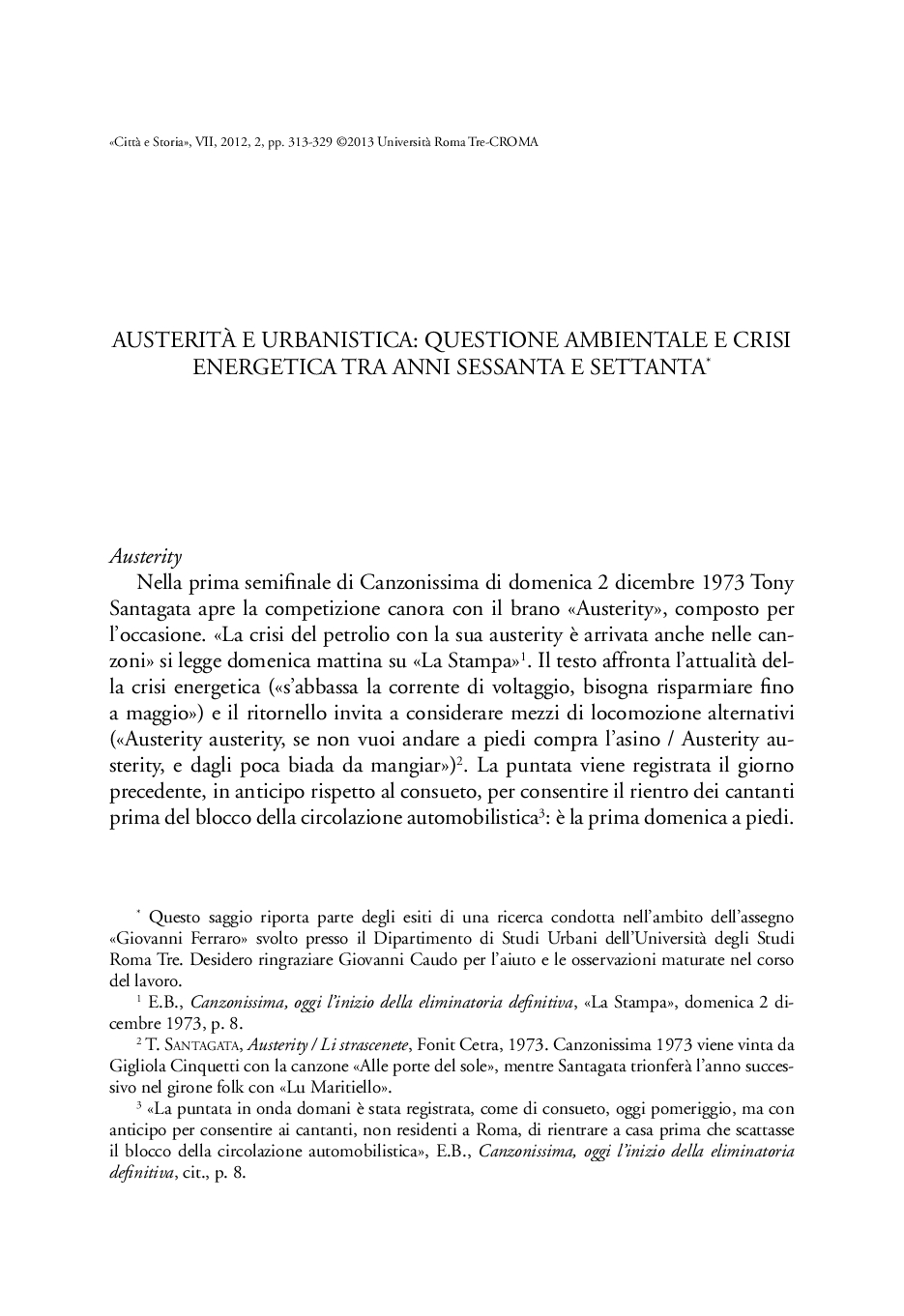Indice degli autori
CITTÀ & STORIA » 2012/2 » La città che cambia. Riconversioni e metamorfosi
ISSN 1828-6364
Renzoni Cristina
Austerità e urbanistica: questione ambientale e crisi energetica tra anni Sessanta e Settanta
pp.313-329, DOI 10.17426/89559
Articoli
Abstract: Following the exacerbation of the Arab-Israeli conflict, the Italian government enacted a series of urgent measures of energetic austerity: between December 1973 and April 1974 Italian citizens faced the need to change their everyday lifestyles and leisure activities, through a collective revision of ways of life that had been consolidated during the previous fifteen years. The oil crisis pushed Italian society to rethink the categories of “need” and “well-being”, in connection with an international debate that focused on the links between economic growth, energetic requirements and models of development. The discussion on the limits of individual behaviour was brought to an acceleration, problematizing individual well-being as a result of the expansion of Italian economy and democracy but also as a consumption of common resources. Cities became one of the places in which the public opinion, as well as several experts and professionals, observed the implications of austerity. Images related to the experience of pedestrian cities catalysed the attention and remained strongly impressed in collective memories for a long time. These images, as well as the emergence of environmental issues, had a strong impact on urban planning and other forms of urban governance. Nevertheless, it should be stressed that the changes occurring in these fields were also prepared by some debates that Italian planning culture had elaborated since the previous decade.

Referenze
- download: n.d.
- Url: http://archivio.centroricercheroma.it/?contenuto=indice-degli-autori&idarticolo=1024
- DOI: 10.17426/89559
- citazione: C. Renzoni, Austerità e urbanistica: questione ambientale e crisi energetica tra anni Sessanta e Settanta, "Città & Storia", VII/2, pp.313-329, DOI: 10.17426/89559

